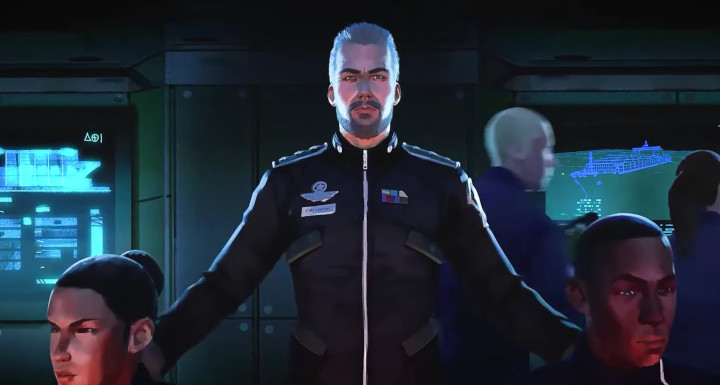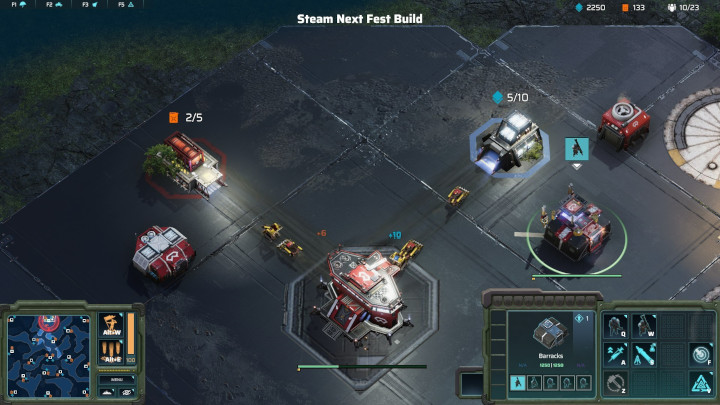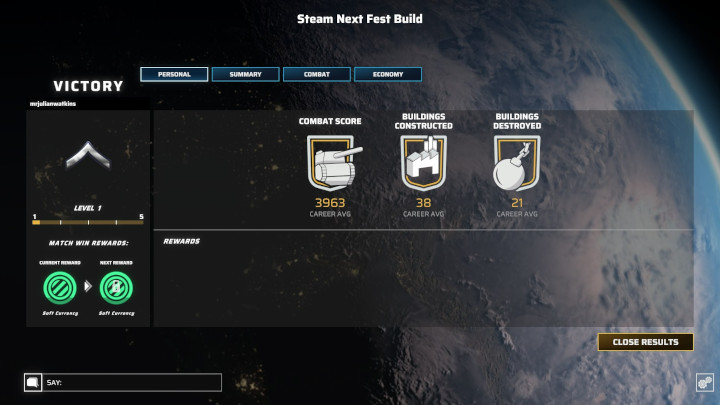
I have to admit, I’m not especially well-versed or experienced in the RTS (real-time strategy) genre. I used to play Command & Conquer quite a bit as a kid, but considering that was a couple decades ago, it’s been a while since I’ve dipped my toes into this end of the gaming pool. At first glance, it might seem that not much has changed in the RTS genre in those two decades. However, my time with Crossfire: Legion has taught me that looks can be deceiving.
How this fits into the narrative of the greater Crossfire universe, I can’t really say. I didn’t get much background on the lore and story — at least, I wasn’t presented with much in my brief time with Crossfire: Legion, so it’s possible there could be far more detail when prompted, poked, or prodded. Although based on the performance of some of the other games that recently launched in the Crossfire-verse, Crossfire: Legion seems to be the jewel in the Crossfire crown right now.
If you’ve played an RTS game before, even if it’s been a hot minute, you will no doubt be in familiar territory with Crossfire: Legion. You will begin a match with a base of operations, two resource deposits (fuel and materials), and a couple of workers already defaulted to mining materials. From there, you simply follow the tried-and-true method of resource-stockpiling, building structures to meet the requirements to build other structures, upgrade current structures to higher tiers, and eventually — once you have that rhythm going — setting up defenses and cranking out ground troops. It might be the same old song and dance, but Legion is very capable of carrying that tune.
Structure options seem par for the course, with barracks to create your rifle and rocket infantry, an armory to upgrade your weapons and defense capabilities, hangars for airborne vehicles, a factory for ground-based vehicles, as well as ground and air defense turrets to safeguard your base, and command posts of sorts that allow you to increase your population count. This effectively allows you to increase the number of mobile assets you can have at your command at any given moment, which will prove essential to your offensive pushes.

You also get a little bulldozer worker asset, which will mine for resources, build and repair these structures, and, in a pinch, even answer a call to arms should you see fit. These guys are essential to your survival, as they are your main source of materials and fuel, and they are also needed to build and repair anything that gets damaged. This can lead to a good deal of juggling, since more bulldozers means you can harvest more resources and repair more structures at once, but each one reduces your population count, which might stimy your troop and vehicle count as you make your forward advancements.
During a particularly shameful defeat, I was seemingly well on my way to dominance, with a high population count, a well-fortified base, a massive troop count, and a well-oiled resource-gathering pipeline. However, after a random attack by enemy forces, I managed to lose all of my bulldozers. I failed to realize this until my resource stockpiles dwindled to zero, grinding my whole operation to a halt. I was basically at the mercy of early-game resource shoegazing as I tried to create as many new bulldozers as possible to get my coffers restocked and my production back online.
Meanwhile, with every new enemy attack, my defenses were depleting, without means to repair the structures outside the circle of my command center’s healing buff. I was left to watch helplessly as my entire military industrial complex crumbled, all from the want of a few bulldozers. It was a bitter defeat, but not one without a valuable lesson.

I was granted access to three maps in the preview build I played, each one having its own identity to stand apart from the others.
The map Mountainside is exactly what it sounds like: a mountainous, desert-like area with gullies that wind around in a mazelike fashion. This can lead to sudden encounters for your scouts, as you never know what lies around a bend. The tighter corridors can lead to head-on skirmishes, as forces get funneled between cliffsides.
The Typhoon map takes place on a chain of islands, a tropical paradise of death and destruction. Unlike Mountainside, the lack of surrounding walls or cliff faces makes it easier to spot enemies from afar. This is by far my favorite map of the three, but that’s mostly based on the island aesthetics more than any terrain-based advantages.
The Predator map feels like the quintessential RTS map, reminding me of Command & Conquer with its more industrial design. It also provides the highest population cap of the three, and it seems to serve as the beginner map to help players get their wits about them. It reminds me of something straight out of a Terminator movie, which almost made me wish I was squaring off against a bunch of T-800s.
Crossfire: Legion ticks most of the usual RTS boxes, but that’s not a bad thing at all.

Being able to set anchor points where new troops or vehicles travel anywhere on the map, right from their respective production facilities, felt like a game-changer. I could send out an initial advancing wave, and as soon as they engaged with the enemy, I could then bounce back to my base and build more troops, which I could then automatically deploy to the front to back up the first wave and have a functionally endless supply of replenishing forces.
This is made all the easier with the minimap in the corner. Not only does that give you a general lay of the land and a view of where resources can be found for satellite bases, but it also shows you exactly where skirmishes are happening. And by left clicking on the minimap, you can instantly jump around. So if your advancing forces are dwindling, just jump back to your base and cook up a new batch, which will then automatically advance to the front, which you can instantly zip to by again left clicking on the map. It’s a nice bit of fast travel that makes it easy to manage multiple tasks across vast areas.
And there are some features that feel unique to Crossfire: Legion — at least, as far as I can tell as someone who’s been away from the genre for such a long time.
For instance, if you find yourself in a pinch and just need to throw a hail Mary to try to buy some time or quash a particularly destructive attack on your base, there is a nifty little airstrike option on a cooldown that will let you rain hellfire down from the gods. Trust me, this little ace up your sleeve can sometimes be the deciding factor between victory and defeat — or even just help you avoid a sure defeat while still fighting tooth-and-nail toward victory. However, since your enemy also has this at their disposal, it’s a two-way street.
There is also a commander meter, which is directly affected by your leadership and how well you manage your base and assets. I didn’t really dive too deeply into this feature, though it did seem to deplete while I was getting my butt kicked, which limited my ability to call in air strikes. So I would say to think of this more as a morality meter.
There is also a leveling system that both wins and losses feed into at the end of each skirmish. I didn’t spend enough time with this system to know for sure what the point of it was. I imagine this could lead to future unlocks or other perks the more you advance in level, or maybe it’s just a feature to aid in fair matchmaking in online PvP.

Of course, I was relegated to the single-player mode in my preview, left to square off against bots. However, considering they weren’t programmed to mock and ridicule me, that was probably for the best, especially after how handily the computer mopped the floor with me while I was trying to reacquaint myself with RTS tactics.
Once I found my footing — and especially after I landed my first victory — I felt like I had a renewed appreciation for the genre. I really enjoyed my time with Legion, and I could see myself going back from time to time.
Crossfire: Legion might not reinvent the wheel, but it really doesn’t need to. “If it ain’t broke,” they say, “don’t fix it.” And the RTS ain’t broke by any means. What Legion does, though, is deliver a competent RTS that drives smoothly, and it does seem to have a couple features to give it a unique identity. Only time will tell if this has the legs to go the distance, or, more importantly, whether it will be able to attract a player base and keep them engaged for the long haul.
We’ll just have to wait and see if Legion‘s hooks have long-term appeal. Having the Crossfire branding might affect how well it’s received, though, and with the other recent Crossfire title not having fared all that well during launch, this could prove to be an uphill battle.
If you want to know more, you can check out a free demo during Steam Next Fest, and you can watch the trailer for the newly announced New Horizon faction below.